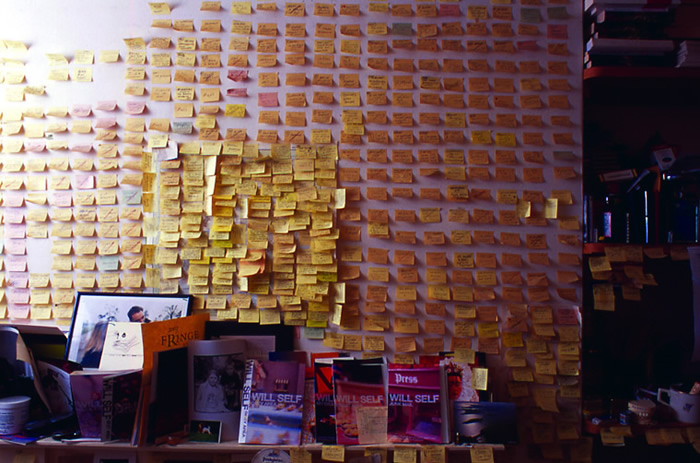I remember, in my early twenties, visiting a friend who was detained under a section at the Friern mental hospital on the outskirts of north London. The low, brick buildings scattered about the greensward, the pathos of the mullions, the urine-coloured linoleum – it all made a desolate impression on me. Together with its sister establishment, the Halliwick, Friern was – depending which way you looked at it – a therapeutic community, or a gulag into which the non-functioning and the indigent inhabitants of the city could be dumped.
Friern – commonly known as Colney Hatch, hence “booby hatch” – was originally one of the great and gothic asylums of the Victorian age, originally designed as a self-supporting community, with its own farm, gas works, water supply and artisan workshops. As the city grew, so did the asylum. By the time of the First World War there were 3,500 beds. However, following the implementation of that superbly oxymoronic policy “care in the community” this declined to a mere 600.
Iain Sinclair, in his opus magister London Orbital describes the great Victorian asylums in some detail: the hulks of London’s peripheral asylums, hollowed out now for development, their cavernous wards partitioned into – you guessed it – luxury flats. But, of course, this is only the latest chapter in the irrational progress of the mental hospitals, as they were ejected, screaming, from the centre of the city.
Perhaps the most famous of all, Bethlem Royal Hospital – the notorious “Bedlam” – has had a notably peripatetic existence. Since 1377 “distracted” patients were “looked after” by being chained to the walls of the hospital attached to the Priory of St Mary Bethlehem outside Bishopsgate in the City. The asylum was officially established in 1547 when the Priory was dissolved, and then, in 1676, it was moved to a building in Moorfields, designed by Robert Hooke. Here, either side of the gates, stood Colly Cibber’s great statues Madness and Melancholy, life-size figures modelled on inmates, one of whom was said to be Oliver Cromwell’s butler.
I caught up with them 332 years later in a 1970s prefab in Beckenham, Kent. A friend who has an association with the Hospital, suggested I come down for the “Sunfayre” to be held as part of the celebrations of the NHS’s recent 60th birthday in the grounds of the Royal Bethlem, which has occupied a 240-acre site here since the 1930s. As for Madness and Melancholy, the Gog and Magog of this alternative London, they, like Bedlam itself, had a century’s layover. The Hospital took up residence in a new building in Lambeth (now the Imperial War Museum), while the statues languished in the Guildhall Museum.
It was a beautiful April day – but not so hot for July. The boy and I took the bus to Waterloo, then waited for the train to West Wickham at a station café selling crazily priced drinks (£4.28 for a Coke and a Red Bull). On the platform, I turned to see the spokes of the London Eye poking out from the façade of the Shell Building, as if Heath Robinson had taken over London’s skyline. A woman walked past me with a stuffed heron.
Out in the sticks, we strolled down privet alleys to the Hospital, where the bouncy castle had no defenders, and a few distracted tots span in the outsize teacups of a merry-go-round. There were tombolas, a few stalls selling ancient Carpenters cassette tapes, and a small, dapper man in a dinner jacket, barking up an audience for his Punch and Judy show. I left the boy eating a burger and watching teams of staff and patients compete in It’s a Knockout-style games involving foam and inflatables, and wandered round the low, red-brick buildings.
I’m not claiming that the Royal Bethlem was the most uplifting of institutions: it was difficult to get in the mood as the valetudinarian big band belted out “In the Mood”; not while so many of the faces in the crowd bore the impress of either distress, or the ataraxy imparted by the medication used to suppress it. Nevertheless, there was the bright art gallery, with its pleasingly frank exhibition of watercolours by David Beales, a long-term patient in mental hospitals. Each had an explanatory card that detailed – with ruthless honesty – the experiences the artist had endured.
And then there was the general openness of the Royal Bethlehem: no doubt it has its locked wards – its bedlams within – but the calm grounds of the hospital were open to all to wander freely; there was a sense here that everyone was doing the very best they could. While in the tiny museum, there were Madness and Melancholy, tensed and timeless evocations of a time when the screams of mental anguish were a spectacle for the quality to enjoy for the price of a ticket.
Pope called them “Great Cibber’s brazen brainless brothers”. But then, what did he know? They’re Portland stone, while the distress they depict is neither brainless, nor brazen.
26.07.08
